NIL
Texas Tech Signs Softball Star NiJaree Canady to Another Seven-Figure NIL Deal
In July 2024, Texas Tech—a school with virtually no softball history to speak of—landed Stanford pitcher NiJaree Canady in the transfer portal. The Red Raiders lured Canady with a $1 million NIL deal, the largest for a college softball player since the practice’s legalization. Talk about a return on investment. Texas Tech will play Texas […]
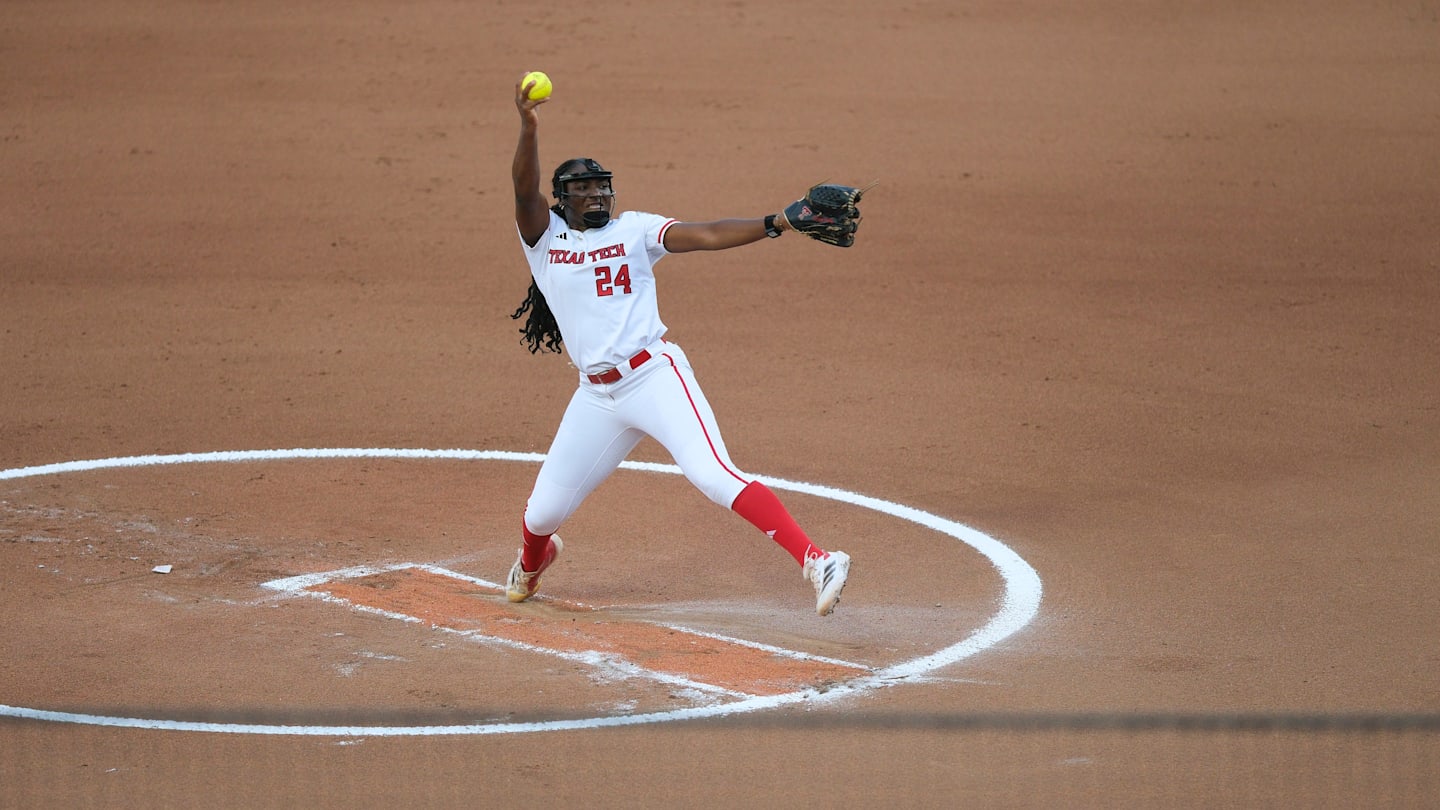
In July 2024, Texas Tech—a school with virtually no softball history to speak of—landed Stanford pitcher NiJaree Canady in the transfer portal. The Red Raiders lured Canady with a $1 million NIL deal, the largest for a college softball player since the practice’s legalization.
Talk about a return on investment. Texas Tech will play Texas Friday in Game 3 of the Women’s College World Series finals—with the winner taking home the national championship.
Before the big showdown, however, the Red Raiders got some accounting done. On Friday, Canady’s manager Derrick Shelby told ESPN’s Ramona Shelburne that Canady had signed another million-dollar NIL contract with Texas Tech.
Canady is 34-6 this season with a 0.97 ERA and 317 strikeouts in 239 innings pitched. She’s also slashing .280/.418/.645 with 11 home runs and 34 RBIs in 107 at-bats.
The Red Raiders had made seven NCAA tournament appearances ever before this year. How quickly the state of a program can change in college sports’s brave new world.
More on Sports Illustrated
NIL
Women’s basketball stars’ NIL brands carrying over into the WNBA
Caitlin Clark and Angel Reese are part of the new generation of women’s basketball stars who have been able to profit off their name in college and build brands. INDIANAPOLIS — Caitlin Clark, Angel Reese and Paige Bueckers are part of the new generation of women’s basketball stars who have been able to profit off […]

Caitlin Clark and Angel Reese are part of the new generation of women’s basketball stars who have been able to profit off their name in college and build brands.
INDIANAPOLIS — Caitlin Clark, Angel Reese and Paige Bueckers are part of the new generation of women’s basketball stars who have been able to profit off their name in college and build brands that have helped them excel off the court in the WNBA.
All three players had national star power before stepping foot in the pros. Clark and Reese have made the All-Star Game in each of their first two seasons and are two of the most popular players in the league.
Bueckers was voted a starter in her first All-Star Game this weekend.
The next group up in college that is led by Hannah Hidalgo, Flau’jae Johnson, Olivia Miles and JuJu Watkins has already benefitted from the name, likeness and image. According to On3, Johnson’s NIL valuation is $1.5 million.
“NIL, man, it is beautiful,” Johnson said. “This year in March Madness, I had about five commercials running and you know it was so cool watching the game, then seeing myself come on. It’s just a great opportunity.”

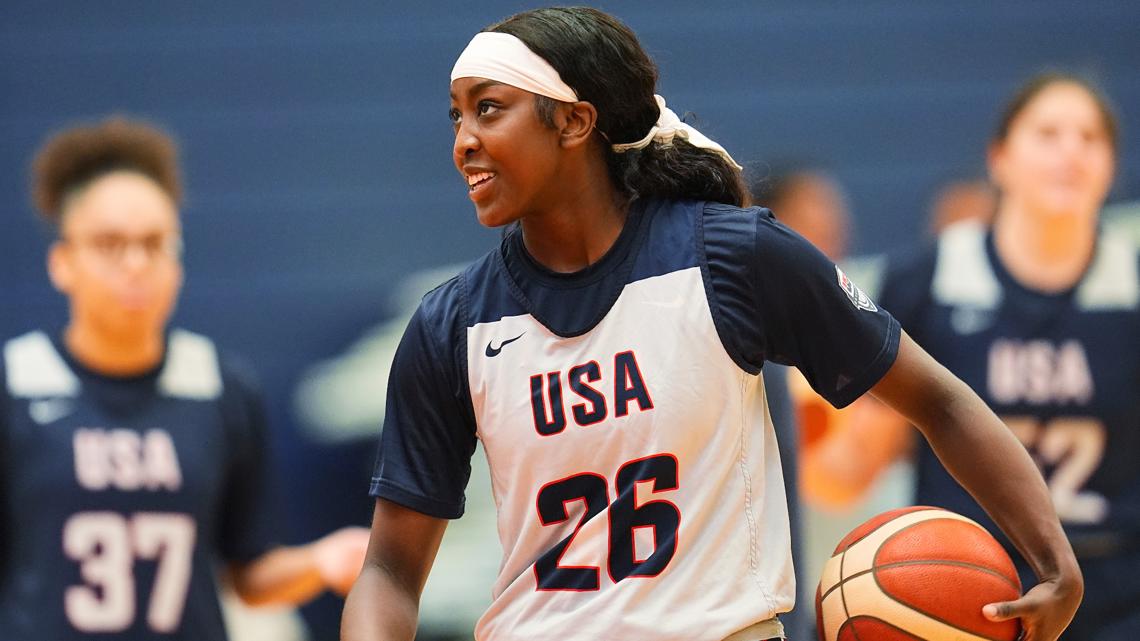
Johnson is a guard at LSU, one of the top schools for NIL in a variety of sports from football to women’s gymnastics to women’s basketball. Johnson, who also has a music career, has gained from the exposure the school has given her, doing national media campaigns with Experian and Powerade.
Hildago, who will be entering her junior year at Notre Dame, is happy that players can finally profit off their own images as opposed to the school getting it all.
“It’s a blessing. Schools for decades have been able to make money off of college players’ names. So for now, for student athletes to be able to make money off of how they carry themselves, you know, we’re a brand ourselves,” she said. “I’m a brand myself and so be able to make money off of my name is honestly truly a blessing and just taking advantage of it is the biggest thing.”

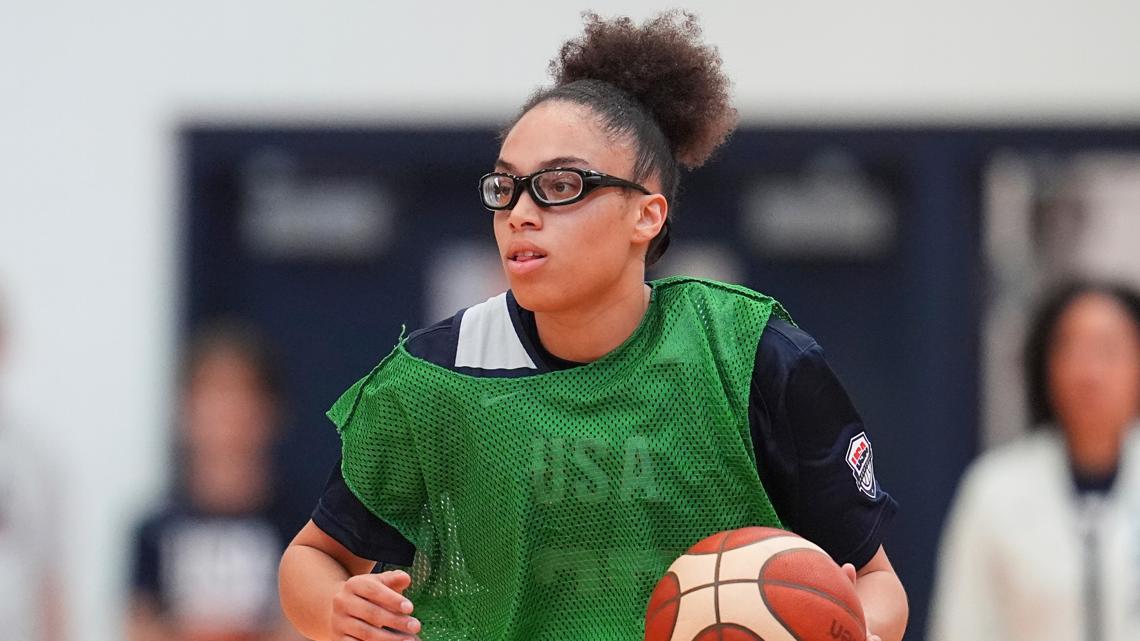
Johnson, Hidalgo and Miles, who helped the U.S. qualify for the World Cup next year by winning gold at the AmeriCup earlier this month, all said that they don’t let the NIL deals they have get in the way of their sport. They credit having a strong support system around them as well as people who handle the deals for them.
“I really dedicate one or two times a week to kind of get all my stuff done,” Miles said. “My agent is very good at scheduling that, but most of my money comes from the collective deal, so for that I really don’t have to do much, which is nice. But any other of the other side deals, my agent will send a videographer out to help me or have her edit stuff or whatever it may be.”
Getting deals and earning money hasn’t just helped the players financially. Some have given back to their communities, including Johnson.

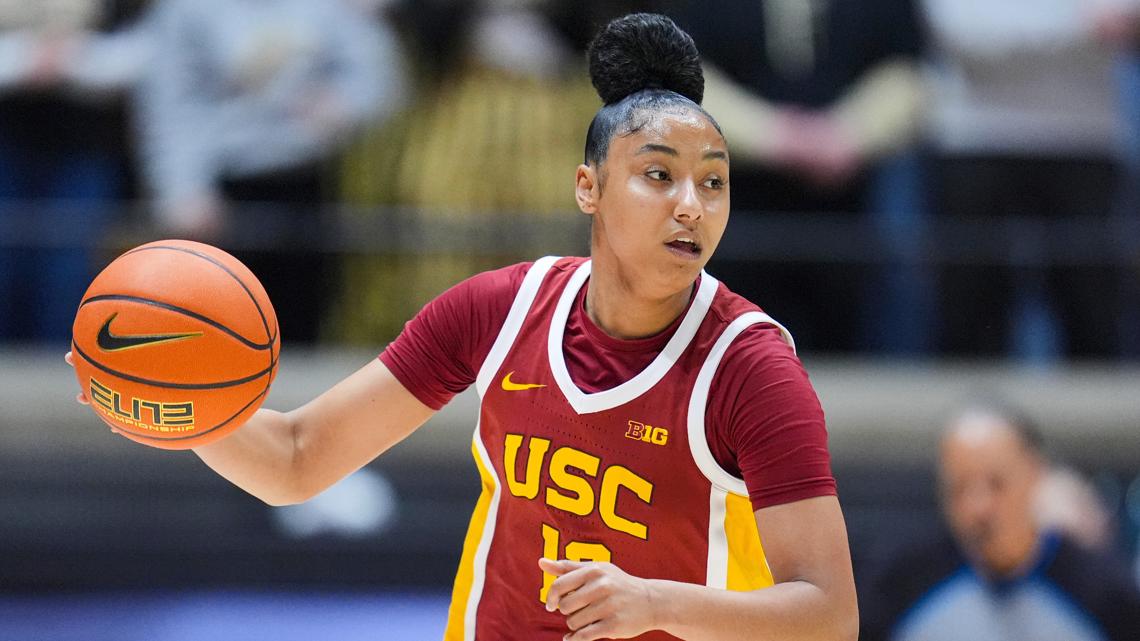
“I just want to be one of those people that uses NIL the right way,” she said. “This year I did a campaign with Experian and we relieved $5 million in debt right for families in Louisiana and then every game we won we added $100,000 to the pot.”
Johnson said it was really touching and emotional when she would receive videos on Instagram from people she helped.
“I’m really using my platform for impact for real. So I think that’s the best part of NIL and just making it better for the young girls that’s coming behind us,” she said.
Copyright 2025 Associated Press. All rights reserved. This material may not be published, broadcast, rewritten, or redistributed.
NIL
NCAA places Memphis basketball on two-year probation
The NCAA has come down on the Memphis Tigers, reportedly levying multiple penalties on the men’s basketball program. That includes putting the program on a two-year probation. Along with the probation, Memphis is facing a one percent budget fine. This comes after two softball players were paid $550 to do what is described as “complete […]
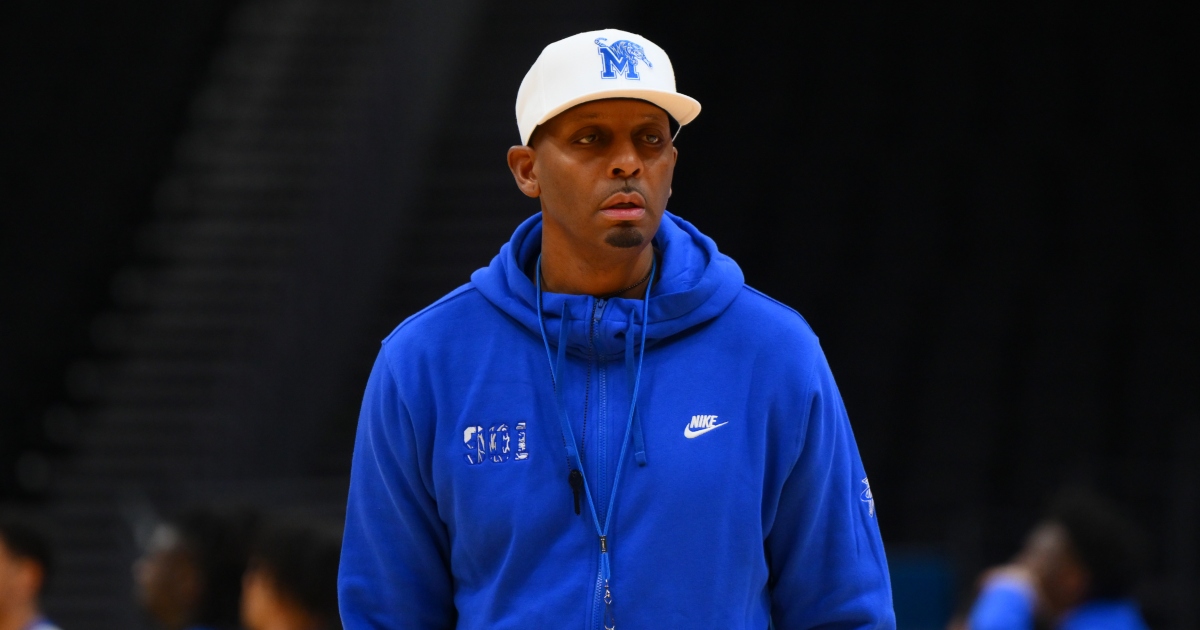
The NCAA has come down on the Memphis Tigers, reportedly levying multiple penalties on the men’s basketball program. That includes putting the program on a two-year probation.
Along with the probation, Memphis is facing a one percent budget fine. This comes after two softball players were paid $550 to do what is described as “complete coursework” for a former Memphis basketball player. It was an academic counselor, Leslie Brooks, who paid the softball players. Brooks has also received a 10-year show-cause penalty.
Memphis was hit with a $30,000 fine in total, plus 1% of the combined budgets of the basketball and softball programs. The NCAA also called for a vacation of all records for contests when athletes played, despite now being deemed ineligible.
In total, Memphis had three athletes, two softball players and the one basketball player, who competed in games while ineligible. Together, they combined for 20 games competed in, which now need to be vacated.
The $550 was divided into $150 for the first softball player. That athlete completed three assignments for the basketball player. The second softball player was paid the remaining $400. That second softball player would provide answers to five tests and four quizzes.
Memphis Tigers basketball coach Penny Hardaway has not publicly commented on the NCAA penalties at the time. Current Memphis softball coach Trena Prater, who took that job in the summer of 2024, has also not publicly commented. In the NCAA’s announcement of the penalties against Memphis, the year the violations occurred and all the names of players involved were not mentioned directly.
However, The Commercial Appeal reported the violations were related to basketball player Malcolm Dandridge, and that they occurred before Prater became the school’s softball coach. On top of that, multiple anonymous sources have reportedly told The Commercial Appeal that Ally Callahan and Aaliyah Dixon were the softball players.
Malcolm Dandridge spent five seasons with Memphis and played in a total of 128 games. During that time, he averaged 5.0 points, 3.4 rebounds, and 0.6 assists per game.
Memphis fired Brooks on February 23rd, 2024. The next day, it was announced that Dandridge would be withheld from competition. That would effectively end his college career.
Under Penny Hardaway, the Memphis program has had issues with the NCAA in the past. In 2023, Hardaway was hit with a three-game suspension for two impermissible in-home visits in 2021 with a recruit.
Then, in 2022, an infraction investigation charged the program with committing four Level II violations and five Level III violations during its handling of James Wiseman‘s eligibility. That came back in 2019. That came after the NCAA initially identified at least four Level I violations. Still, at the time, the program avoided serious penalties and instead was put on probation for three seasons. Now, the Tigers find themselves on probation again.
NIL
Why Henry Ford’s Draft Decision To Return To College For 2026 Is Risky
Image credit: Henry Ford (Mike Janes/Four Seam Images) By all accounts, Henry Ford was supposed to sign. A top 75 prospect on Baseball America’s draft board for 2025, Ford had the tools, the performance and high-major pedigree. It’s why the draft-eligible sophomore from Virginia was widely expected to begin his professional career this summer. Instead, […]
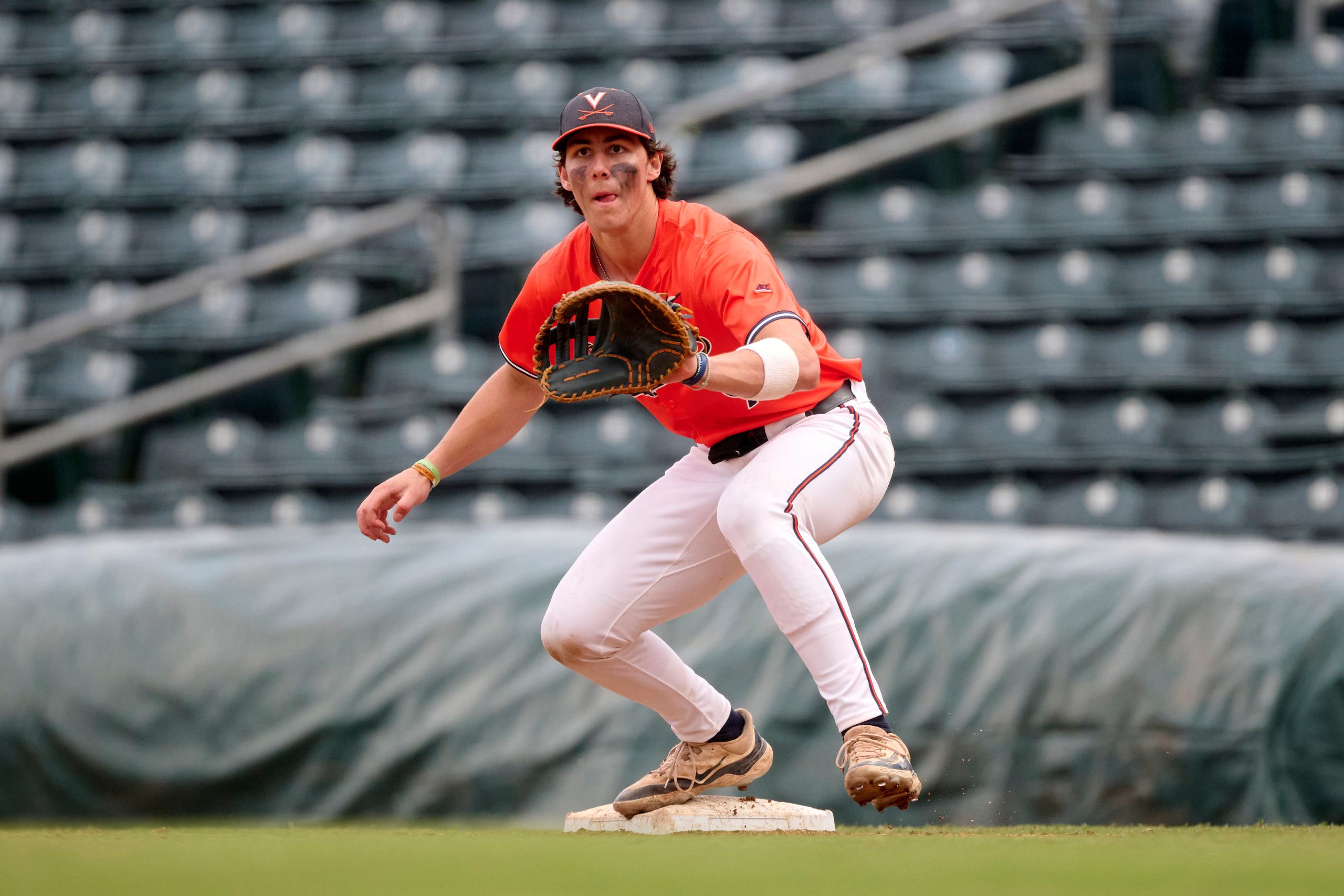
Image credit:
Henry Ford (Mike Janes/Four Seam Images)
By all accounts, Henry Ford was supposed to sign.
A top 75 prospect on Baseball America’s draft board for 2025, Ford had the tools, the performance and high-major pedigree. It’s why the draft-eligible sophomore from Virginia was widely expected to begin his professional career this summer.
Instead, he went undrafted and will be in Knoxville this fall as one of the crown jewels of Tennessee’s portal class.
In doing so, Ford has become this year’s face of a small but significant trend: high-profile players turning down pro ball after their draft-eligible sophomore seasons to return to school, often with the goal of boosting their stock in the following year’s draft.
He wasn’t alone. Jack Arcamone, a catcher from Richmond, passed on a pro deal to transfer to Georgia. Matthew Dallas, a lefthanded pitcher from Wake Forest, chose to return for his junior season rather than sign. So did Tre Phelps, a draft-eligible sophomore from Georgia who will head back to Athens for his junior year.
But the decision to go back to school—especially for hitters—is a perilous one.
The data, while somewhat anecdotal given the small annual sample, paints a cautionary picture. Hitters ranked in the top 200 who returned to school in either 2023 or 2024 saw their stock crater.
Jalin Flores, ranked No. 114 out of Texas in 2024, returned for his junior season and slipped to the 11th round in 2025. Zack Stewart, ranked No. 131 in 2024 from Missouri State, went undrafted and unranked in 2025. Harrison Didawick, Jonathan Vastine and others suffered similar fates.
Hitters who return to the collegiate ranks often do so with the belief that another year of production, strength gains and batted-ball data will vault them into earlier rounds. But the harsh reality is that year-over-year draft movement is unforgiving for that demographic.
Teams often view returning hitters with more skepticism than enthusiasm. There’s a prevailing belief among evaluators that most college bats are largely “formed” by the end of their sophomore year, meaning the ceiling is already visible. Unless a player drastically transforms his swing, shows newfound power or proves he can handle a premium defensive position, the narrative shifts from projection to stagnation. And in a draft pool flooded with younger upside bets and high school bats, standing still often means falling behind.
Pitchers, on the other hand, tend to fare better.
Will Frisch didn’t pitch an inning in 2022 after opting to return to Oregon State following a strong draft-eligible sophomore campaign in 2021 and was still taken in the sixth round that July. Brandon Sproat returned after a top 100 season and went on to sign for seven figures. In 2022, Jonathan Cannon inked a deal for $925,000 despite returning for his junior year.
The difference, in many cases, comes down to perceived ceiling and supply. Projectable college arms with durability or velocity stand out in thin pitching classes. Hitters have a harder time moving the needle. In a class with hundreds of statistical success stories, simply repeating what one did as a sophomore hitter is rarely enough to compel a team to pay more the second time around.
“You’re asking teams to pay more for the same player—or sometimes a worse version of the same player,” one agent said. “The bar is just way higher.”
So why did Ford and Arcamone—both well-liked, analytically-friendly bats—walk away from the table?
Among other things, the answer, increasingly, is NIL.
College baseball has entered a new era. Returning to school no longer means forgoing six-figure earnings. In fact, for many top players outside the top 100 picks, the opposite is true.
According to multiple agents who spoke with Baseball America on the condition of anonymity, NIL collectives are offering “substantial” paydays to players with eligibility remaining, particularly those who hold draft leverage. Quarter-million-dollar deals are no longer rare, and those numbers often eclipse what a sixth- or seventh-round selection might command in slot money.
“An eighth-rounder who earned big in NIL can make more than a sixth-rounder without it,” one agent said. “That’s a real factor in our conversations now.”
For players like Ford, the calculus shifts.
Tennessee just sent eight players to the top three rounds of the draft—five of them transfers. The program has a well-documented history of developing hitters and arms alike and has a robust NIL infrastructure to match. Ford doesn’t need to prove he can play. But if he can hit 15 home runs for a national title contender, raise his exit velocity and show improved defense, there’s a clear path to the first two rounds in 2026, and he’ll get paid handsomely in the meantime.
That math doesn’t work for everyone. Draft-eligible sophomores with leverage often only get it once. Returning can turn that leverage into a liability. There’s performance risk, injury risk and potentially the awkward stigma that comes with being passed over once before.
For every Sproat, there are two or three players who slipped, never regained value or plateaued entirely. The risk-reward scale tips fast.
Still, the landscape is changing.
The combination of performance science, NIL and player agency is empowering more players to weigh their options, not rush them. For players with the right situation—a legitimate plan, a top-tier program and real money on the table—returning can be the smart play.
But it’s not the safe one. The same agents who praise the new NIL economy also caution against seeing it as a cure-all.
“You can get paid now,” one again said. “But it doesn’t guarantee you’ll get paid later.”
Ford and others are betting on both.
NIL
Alabama State launches new NIL fund to align with competitive standard
Alabama State athletic director Dr. Jason Cable announced Wednesday the launch of a new NIL initiative aimed to improve the student-athlete experience at the university. The Hornet Student-Athlete Fund was created in response to the “House settlement” with the NCAA allowing college athletics programs to directly compensate student-athletes for their name, image and likeness. […]

Alabama State athletic director Dr. Jason Cable announced Wednesday the launch of a new NIL initiative aimed to improve the student-athlete experience at the university.
The Hornet Student-Athlete Fund was created in response to the “House settlement” with the NCAA allowing college athletics programs to directly compensate student-athletes for their name, image and likeness.
The fund serves as an opportunity for donors and fans of Alabama State athletics to contribute directly to revenue-sharing models and NIL support structures.
The fund puts Alabama State in a critical position to recruit and retain elite student-athletes, serving as a long-term investment for the future of athletics at the university.
Despite the prestige of some universities for their continued success in athletics, this new era of NIL deals can and does play a role in the minds of recruits and current athletes’ decisions to stay or choose a university.
The institution of a new fund reflects the mission of elevating athletics at Alabama State by providing new opportunities for student-athletes and keeping the university competitive at the Division I level.
The new fund does not replace the current Hornet Club, which remains important in supporting the department’s operating budget.
On Monday, Alabama State announced that the Hornet Club that the annual fund goal for the 2024–2025 giving year was met and surpassed.
The Hornet Club welcomed over 500 new investors and raised more than $500,000 in support of Alabama State student-athletes.
The new fund and continued support of the Hornet Club will continue to keep Alabama State in the spotlight as one of the premier programs in the Southwestern Athletic Conference.
To learn more or contribute, visit the Hornet Club NIL Fund Website for additional information.
NIL
Why Ian Jackson is St. John’s most important team transfer for 2025-26
What transpired last season at St. John’s was the latest in a career of incredible coaching performances from Rick Pitino. He took over the Red Storm in 2023 and wasted little time turning them into a Big East contender for the first time in decades. St. John’s won 31 games, notching both regular season and […]

What transpired last season at St. John’s was the latest in a career of incredible coaching performances from Rick Pitino. He took over the Red Storm in 2023 and wasted little time turning them into a Big East contender for the first time in decades. St. John’s won 31 games, notching both regular season and conference tournament titles last year, though their postseason experience ended earlier than expected in the round of 32.
There’s a certain buzz in Queens again this season, though this year’s team is going to look largely different from last year’s success. Reigning Big East Player of the Year RJ Luis Jr. is gone after a brilliant junior season while starters like Kadary Richmond, Aaron Scott, and Simeon Wilcher also departed in the offseason. It’s not a completely new roster, as star forward Zuby Ejiofor becomes even more of a focal point for Pitino’s squad, but there have been plenty of reinforcements.
Simply put, the Red Storm assembled the nation’s best transfer class and have a roster loaded with talent for 2026. The frontcourt gets a major boost with Bryce Hopkins from Providence and Dillon Mitchell, fresh from his time at Cincinnati. Joson Sanon is a highly-touted shooting guard coming off an underwhelming freshman season with Arizona State. Oziyah Sellers is another brilliant guard from Stanford while Dylan Darling should see decent run after his time at Idaho State.
There almost isn’t a wrong answer when identifying the best new player of this class, but former North Carolina guard Ian Jackson sure might be the most important. A 6-4 guard from the Bronx, Jackson was the #6 freshman prospect in the nation last season and now returns much closer to home after his time with the Tar Heels. A mixed review of a freshman year saw him put up 11.9 points and 2.7 rebounds while knocking down 39% of his 3-pointers, but Pitino and company are excited about his potential.
The expectation is that Jackson doesn’t just step into a major role but likely takes up point guard duties. He’s clearly a very talented prospect coming off a decent freshman season where he didn’t exactly live up to that top billing. He wasn’t the only player who struggled in Chapel Hill last year, but closer to home the hope is that he blossoms and becomes a major leader for St. John’s.
After all he’s stepping into a major role, replacing impressive names like Luis and Richmond from last year’s successful campaign. This transfer class is full of veteran experience and incredible raw talent and St. John’s is hoping they got the combination right for a truly memorable season. If that does come to pass, and the Red Storm get deeper into the Big Dance, then Jackson will have certainly taken a step forward as a sophomore and become a real leader for this squad.
NIL
LSU Baseball Transfer Portal Addition Confirms Decision to Make Way to Baton Rouge
Jay Johnson and the National Champion LSU Tigers secured a commitment from High Point infielder Brayden Simpson in June as the program’s first portal addition. Simpson, one of the top prospects in the NCAA Transfer Portal, is coming off of a career season in North Carolina. The coveted infielder primarily handled business as a third […]

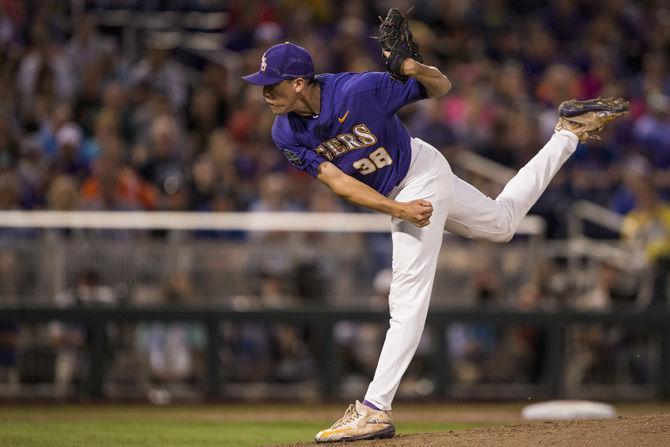
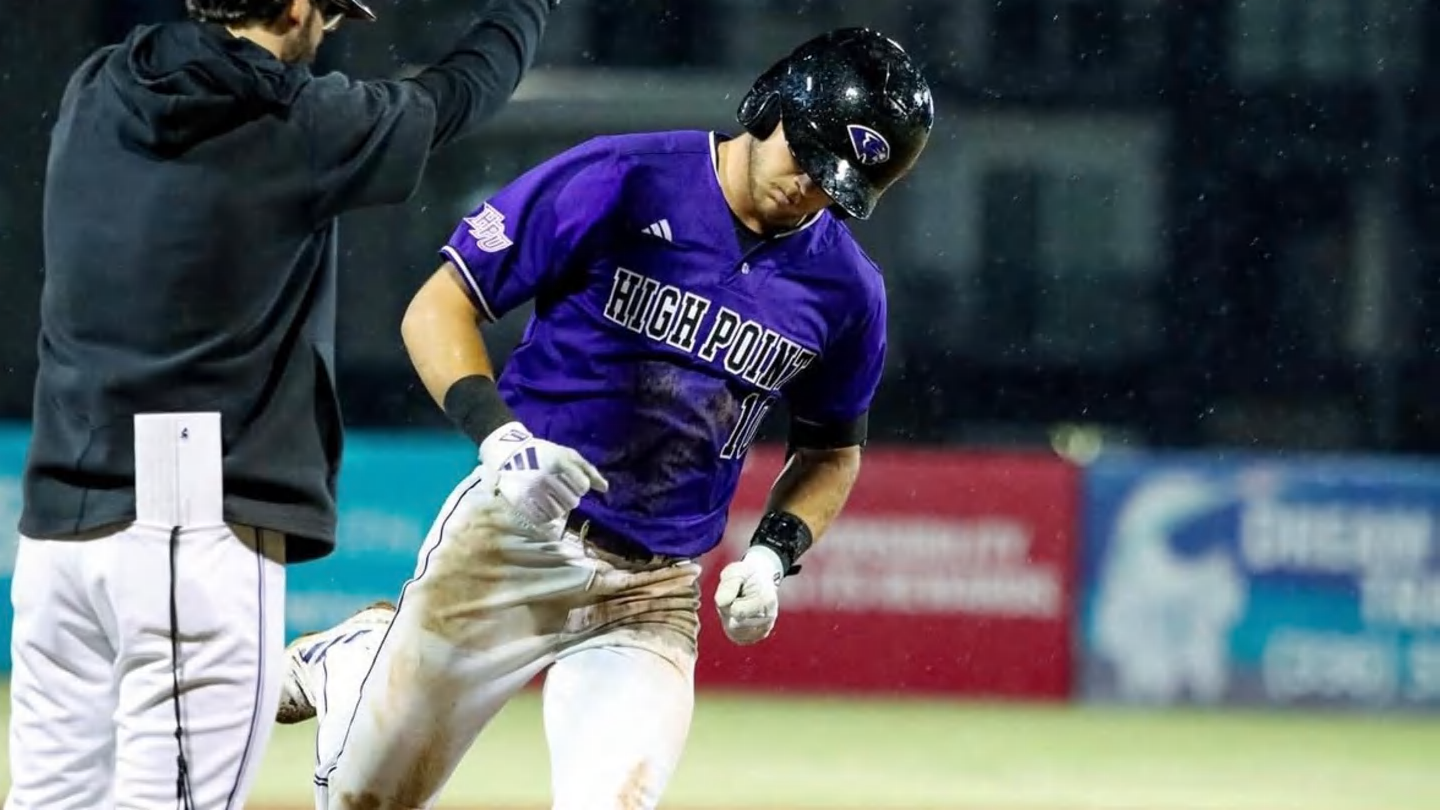
Jay Johnson and the National Champion LSU Tigers secured a commitment from High Point infielder Brayden Simpson in June as the program’s first portal addition.
Simpson, one of the top prospects in the NCAA Transfer Portal, is coming off of a career season in North Carolina.
The coveted infielder primarily handled business as a third baseman for High Point this past season where he shined for his Panthers squad.
Simpson had a dominant two-year stretch at High Point with his 2025 campaign quickly putting his name on the map.
He rounded out the season batting .389 with 22 home runs, 77 RBI and a .477 on base percentage this past season.
Simpson is a Swiss Army Knife in the infield and has also spent some time at first base in 2024 and second base in 2023.
In 2024, the talented High Point transfer started in all 62 games where he batted .300 with 12 home runs and 45 RBI. He started in 58 games this year.
Now, after being committed to the LSU Tigers for over a month, Simpson has confirmed his intentions of making his way to campus.
The High Point transfer will not sign an undrafted free agent contract with an MLB organization and will make his way to Baton Rouge for the 2026 season.
— Brayden Simpson (@bksimpson7) July 16, 2025
For the LSU Tigers, the program is on a heater in the NCAA Transfer Portal with the program nearing the double-digit mark from an additions perspective.
On Wednesday, LSU received confirmation of Simpson’s intentions along with landing a commitment from a prized transfer.
Johnson and the LSU Tigers have landed a commitment from Kansas right-handed pitcher Cooper Moore, he revealed via social media on Wednesday.
Moore, one of the top arms in the NCAA Transfer Portal, narrowed his focus to multiple coveted programs with the LSU Tigers, Tennessee Volunteers and Oklahoma Sooners emerging as contenders.
BREAKING: Jay Johnson strikes again in the Transfer Portal with a commitment from Kansas RHP Cooper Moore.
The Big 12 transfer rounded out his sophomore campaign with a 3.96 ERA, 85 strikeouts and 19 walks over 88.2 innings.
One of the top portal arms is Baton Rouge bound. pic.twitter.com/BDlMLFaiIr
— Zack Nagy (@znagy20) July 16, 2025
But it’s Johnson and the defending National Champion LSU Tigers that get the job done with Cooper taking an official visit to Baton Rouge earlier this month.
The Big 12 transfer is coming off of a standout sophomore campaign where he logged a 3.96 ERA, 85 strikeouts and 19 walks over 88.2 innings.
The Buzz: LSU Football Trending for Multiple Targets on the Recruiting Trail
LSU Baseball’s Derek Curiel Named D1 Baseball’s National Freshman of the Year
LSU Football Beats Out Texas Longhorns and Florida Gators for Five-Star EDGE
Follow Zack Nagy on Twitter: @znagy20 and LSU Tigers On SI: @LSUTigersSI for all coverage surrounding the LSU Tigers.
-

 Technology3 weeks ago
Technology3 weeks agoPet fitness and wellness trends for a healthier and happier dog
-

 College Sports3 weeks ago
College Sports3 weeks agoWAC to Rebrand to UAC, Add Five New Members in 2026
-

 College Sports3 weeks ago
College Sports3 weeks agoA new era of Dickinson hockey begins behind the bench – The Dickinson Press
-

 Motorsports2 weeks ago
Motorsports2 weeks agoWhy Cosmetics are Making Up for Lost Time in Women’s Sports
-

 Motorsports2 weeks ago
Motorsports2 weeks agoTeam Penske names new leadership
-

 Sports1 week ago
Sports1 week agoNew 'Bosch' spin
-

 Youtube2 weeks ago
Youtube2 weeks ago🚨 BREAKING: NBA MVP Shai Gilgeous-Alexander signs the RICHEST annual salary in league history
-

 Sports1 week ago
Sports1 week agoE.l.f Cosmetics Builds Sports Marketing Game Plan Toward Bigger Goals
-

 College Sports2 weeks ago
College Sports2 weeks agoMSU Hockey News – The Only Colors
-
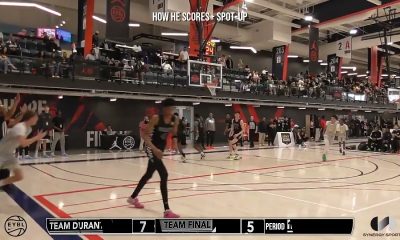
 College Sports2 weeks ago
College Sports2 weeks agoIU basketball recruiting




























